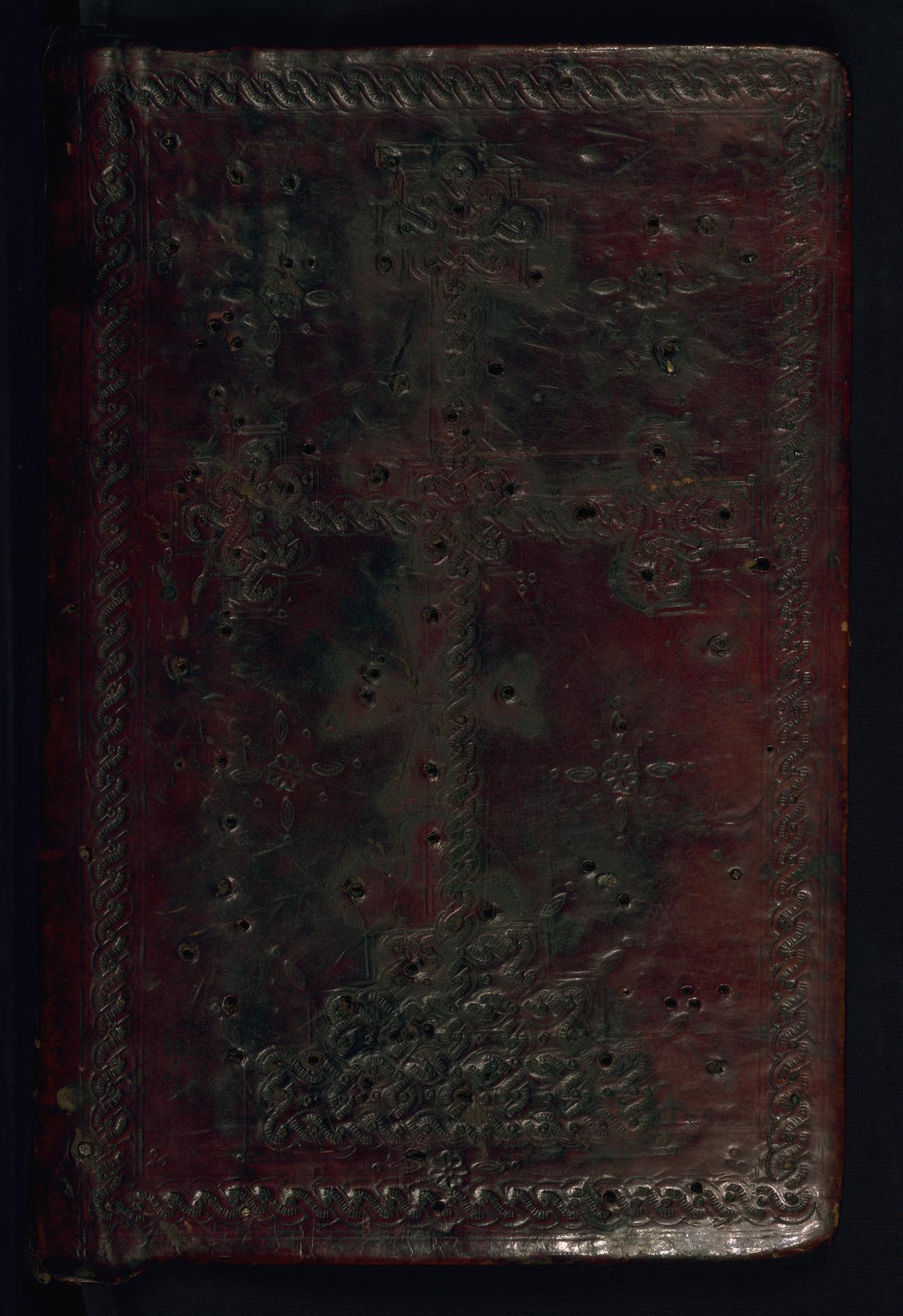Gospels
(Renaissance Europe , Manuscripts and Rare Books)
This Armenian Gospel book was produced in 904 of the Armenian era (1455 CE) at the monastery of Gamaiel in Xizan by the scribe Yohannes Vardapet, son of Vardan and Dilsat, and was illuminated by the priest Xac`atur. The priest P`ilipos commissioned the manuscript as a memorial to himself, his parents azar and Xut`lumelik`, and other relatives listed in the colophon on fols. 300r to 301v. P`ilipos is depicted on fol. 14v alongside his brothers Yusep` and Sultansa, as they kneel before the Virgin and Child enthroned (Theotokos). The book contains twenty-six full-page polychrome miniatures, including four Evangelist portraits; ornately designed canon tables; four decorated incipit pages; numerous marginal miniatures of floral and faunal motifs; and nineteen marginal miniatures of biblical characters or allusions to biblical narratives.
Provenance
Provenance (from the French provenir, 'to come from/forth') is the chronology of the ownership, custody, or location of a historical object. Learn more about provenance at the Walters.
Created by Yohannes Vardapet and illuminated by Priest Khachatur, Monastery of Gamghiel, Xizan (modern Hizan or Khizan, Türkiye), 1455, for Lord Philippos. Aristakes, Armenia, 1617 [mode of acquisition unknown] [1]. Karapet, Armenia, 1704 [mode of acquisition unknown] [2]. Sahak Vardapet, Armenia, 1749, by purchase [3]. Church of Vardan, Lake Van area, Türkiye, by 1867 [mode of acquisition unknown] [4]. Jacques Rosenthal, Munich, by 1900 [mode of acquisition unknown; Leo Olschki, Florence, 1905, [mode of acquisition unknown]; Henry Walters, Baltimore, by 1911, by purchase; by bequest to Walters Art Museum, 1931.
[1] Location unknown; Aristakes had the manuscript binding restored.
[2] Location unknown; Karapet was a priest.
[3] Location unknown.
[4] The location of the manuscript is unknown between 1867 and 1900. S. Der Nersessian suggests in her catalogue of the Walters Armenian manuscripts that this one was removed from the church of Surb Vardan at Van “perhaps at the time of the Armenian Massacres of 1896.”
Exhibitions
| 2024-2025 | If Books Could Kill. The Walters Art Museum, Baltimore. |
| 2004 | Byzantium: Faith and Power (1261-1557). The Metropolitan Museum of Art, New York. |
| 2003 | The Cross and the Crescent: Books from the Ottoman Age. The Walters Art Museum, Baltimore. |
| 2001 | Treasures from the Ark: 1700 Years of Armenian Christian Art. British Library, London. |
| 1995 | To Hell and Back: Medieval Images of the Afterworld. The Walters Art Gallery, Baltimore. |
| 1994 | Treasures in Heaven: Armenian Illuminated Manuscripts. The Morgan Library & Museum, New York; The Walters Art Gallery, Baltimore. |
| 1988 | Treasures in Heaven: Armenian Manuscript Illumination. The Walters Art Gallery, Baltimore. |
| 1984-1985 | Illuminated Manuscripts: Masterpieces in Miniature. The Walters Art Gallery, Baltimore. |
| 1977-1978 | Splendor in Books. Grolier Club, New York; The Walters Art Gallery, Baltimore. |
| 1957-1958 | The History of Bookbinding 525-1950 A.D.. Baltimore Museum of Art, Baltimore. |
| 1953-1954 | Flight, Fantasy, Faith, Fact. Dayton Art Institute, Dayton. |
| 1953-1957 | 4000 Years of Modern Art. The Walters Art Gallery, Baltimore; Baltimore Museum of Art, Baltimore. |
Conservation
| Date | Description | Narrative |
|---|---|---|
| 10/1/1984 | Treatment | repaired |
Geographies
Turkey, Lake Van (Place of Origin)
Measurements
Folio H: 10 13/16 × W: 7 1/16 in. (27.5 × 18 cm)
Credit Line
Acquired by Henry Walters, 1911
Location in Museum
Not on view
Accession Number
In libraries, galleries, museums, and archives, an accession number is a unique identifier assigned to each object in the collection.
In libraries, galleries, museums, and archives, an accession number is a unique identifier assigned to each object in the collection.
W.543


